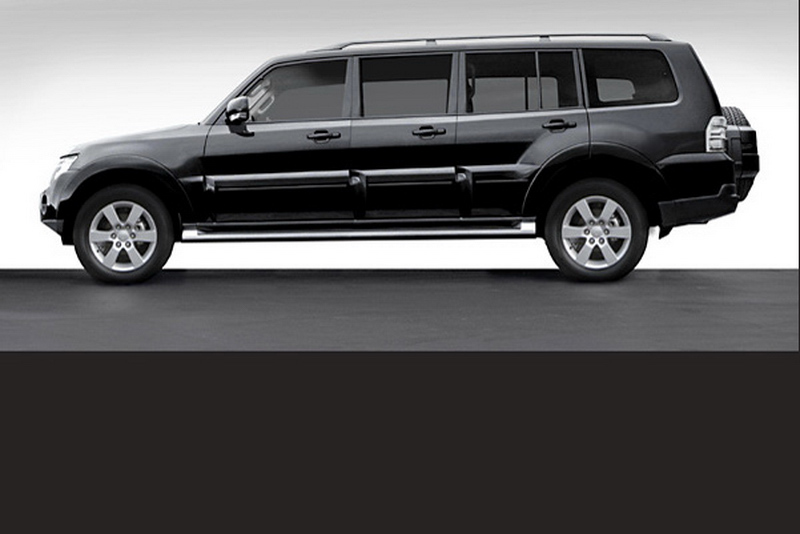A sport utility vehicle (SUV) is a generic marketing term for a vehicle similar to a station wagon, but built on a light-truck chassis. It is usually equipped with four-wheel drive for on- or off-road ability, and with some pretension or ability to be used as an off-road vehicle. Not all four-wheel drive vehicles are termed as SUV. Some SUVs include the towing capacity of a pickup truck with the passenger-carrying space of a minivan or large sedan. Since SUVs are considered light trucks and often share the same platform with pick-up trucks, they are regulated less strictly than passenger cars under the two laws in the United States, the Energy Policy and Conservation Act for fuel economy, and the Clean Air Act for emissions.
The term is not used in all countries, and outside North America the terms "off-road vehicle", "four-wheel drive" or "four-by-four" (abbreviated to "4WD" or "4x4") or simply use of the brand name to describe the vehicle like "Jeep" or "Land Rover" are more common. However, not all SUVs have four-wheel drive capabilities. Conversely, not all four-wheel-drive passenger vehicles are SUVs. Off-road vehicle is a broad class of vehicles, built primarily for off-road use. However, this distinction is often not made by the general public and the media. Although some SUVs have off-road capabilities, they often play only a secondary role, and SUVs often do not have the ability to switch among two-wheel and four-wheel-drive high gearing and four-wheel-drive low gearing. While auto makers tout an SUV's off-road prowess with advertising and naming, the daily use of SUVs is largely on paved roads and in urban areas.
Extremely popular in the late 1990s and early 2000s, the SUV's popularity has since declined due to high oil prices and a declining economy. The traditional truck-based SUV is gradually being supplanted by the crossover SUV, which uses an automobile platform for lighter weight and better fuel efficiency, as a response to much of the criticism of sport utility vehicles.
Although designs vary, SUVs have historically been mid-size passenger vehicles with a body-on-frame chassis similar to that found on light trucks. Early SUVs were mostly two door models, and were available with removable tops. However, with market and regulatory forces pushing the SUV market towards four doors, by 2002 all full-size two door SUVs were gone from the market. As of 2011, only the Jeep Wrangler remains as a two door SUV, although Jeep also offers a four door variant. Since the mid 90s, the two door SUV market was cannabalized by the four door SUV. Two door SUVs were mostly carry-over models, and they were not viewed as viable enough to redesign at the end of their design cycle. They generally were not promoted heavily during this time, leading to even hardcore off-roaders purchasing four door models. The 2-door SUV would return to impact for the 2010s with the release of the Range Rover Evoque and the Nissan Murano convertible, although both vehicles are still considered unibody.
Most SUVs are designed with an engine compartment, a combined passenger and cargo compartment, and no dedicated trunk such as in a station wagon body. Most mid-size and full-size SUVs have three rows of seats with a cargo area directly behind the last row of seats. Cargo barriers are often fitted to the cargo area to protect the vehicles occupants from injury from unsecured cargo in the event of sudden deceleration or collision.






No comments:
Post a Comment